Words and photos by Alana Dimou
Large ham, potato salads, an assortment of ripe and juicy fruit, prawns, fried rice, barbecued anything and everything. A heaps Aussie Christmas table is not easily defined.
Australia is an extraordinary place where over a quarter of the population are born in a place other than here. Subsequently, celebratory cuisine in Australia oscillates within a hugely diverse spectrum.
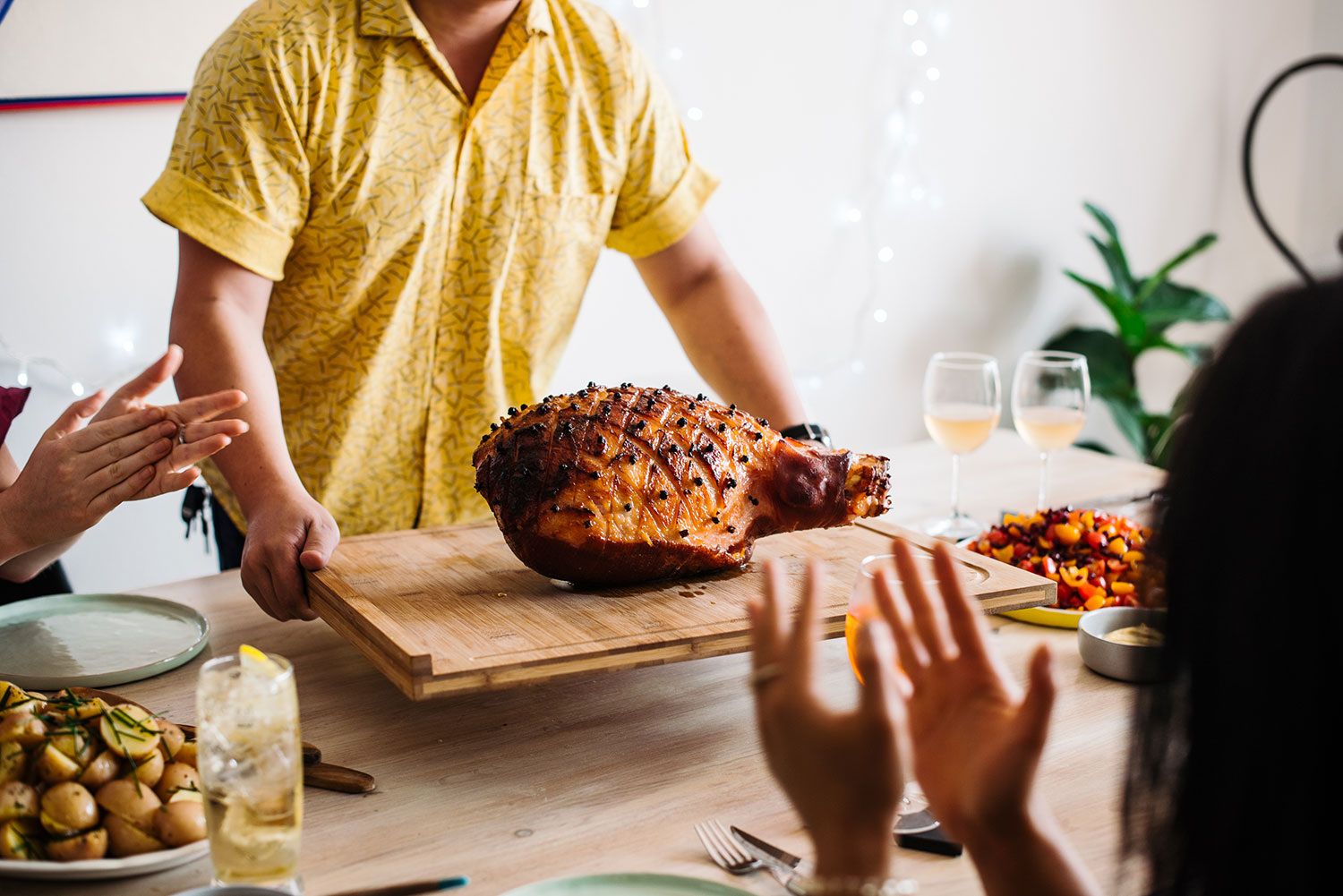
As a daughter and granddaughter of migrants hailing from Egypt and Cyprus, I am often pulled in different directions concerning the ‘Aussie’ way to do and cater for Christmas.
There's the influence from my heritages, with their emphasis on the handmade, homemade and abundance of shared plates; from my exposure to the advertised quintessential Australian meal, where families laugh with cricket bats and eat prawns outdoors; and even from Jamie Oliver and the rest of them stuffing huge, huge turkeys throughout mid-December on primetime television.
My celebratory cooking schtick, as with many Australians of a migrant background, is a tasty consolidation of then-and-now, and here-and-there. It’s not something I’d realized until now, but what I serve at Christmas time for friends is shaped exclusively by memories of my family.
My Christmas cooking intuition has evolved into a four-pronged approach. At present, my fundamentals are:
- A fluorescently glossy, glazed ham on the bone
- Some potatoes, I don’t care how or what, just potatoes
- A very juicy salad
- A colorful showstopper of a dessert, preferably full of fruit, and, actually, preferably a pavlova
The Ham
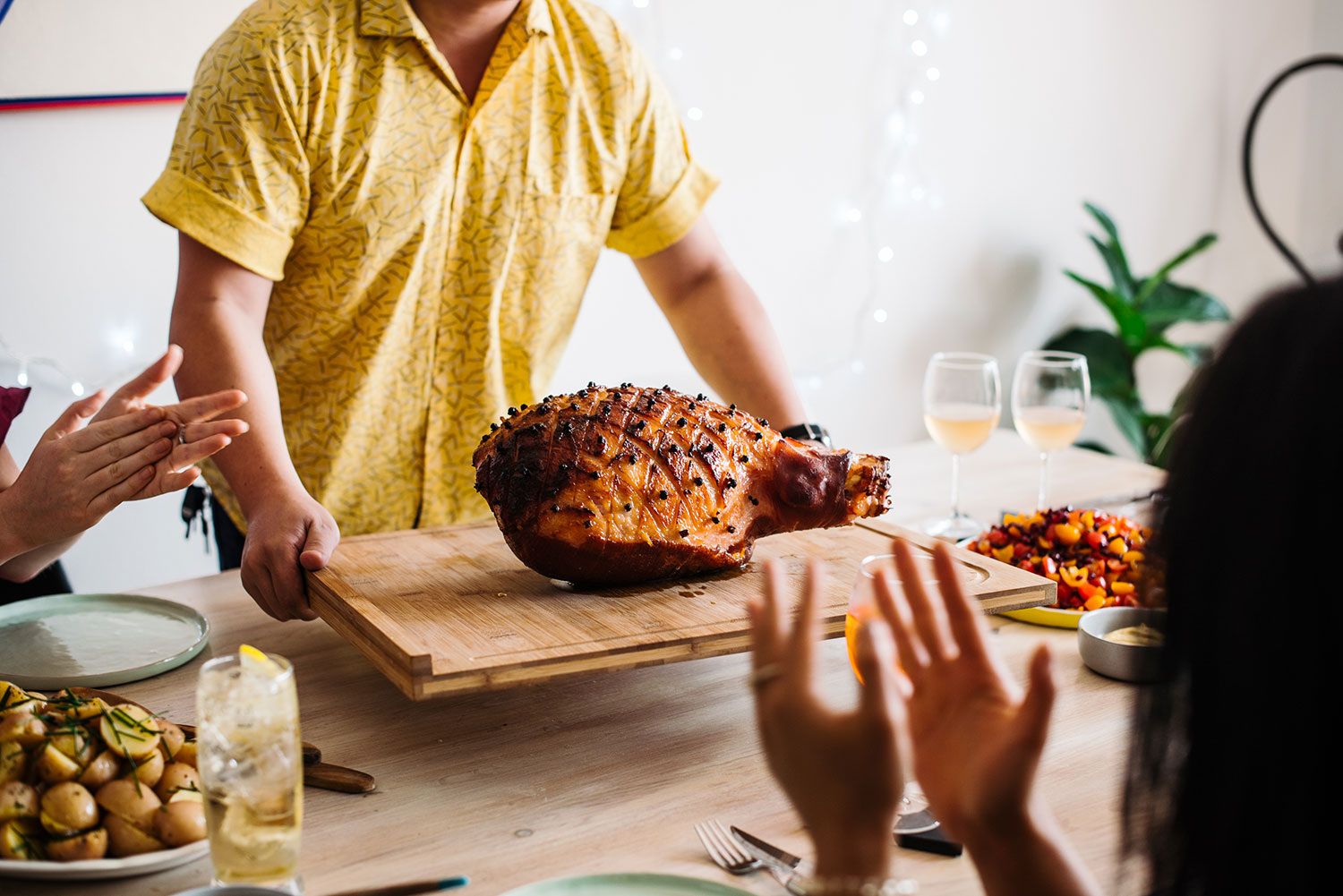
A ham on the bone is a classic Australian Christmas centerpiece, so it’s not unexpected that friends erupt in polite applause as the carving board descends on the table. Whole, smoked legs of ham are readily available from November onwards in Australian butchers and supermarkets as dedicated sections of the store are set up to accommodate the rush of ham sales.
The following information may discount my broadcasted, deep passion for the dish, but Christmas ham at my family table is a relatively new addition to our holiday repertoire. Around 10 years ago my mum received a cut of half-ham as a Christmas gift from her boss (yes, that’s a thing here) and since then we’ve become new converts, a real ham fam, and now it’s all I ever want to cook for my friends this time of year.
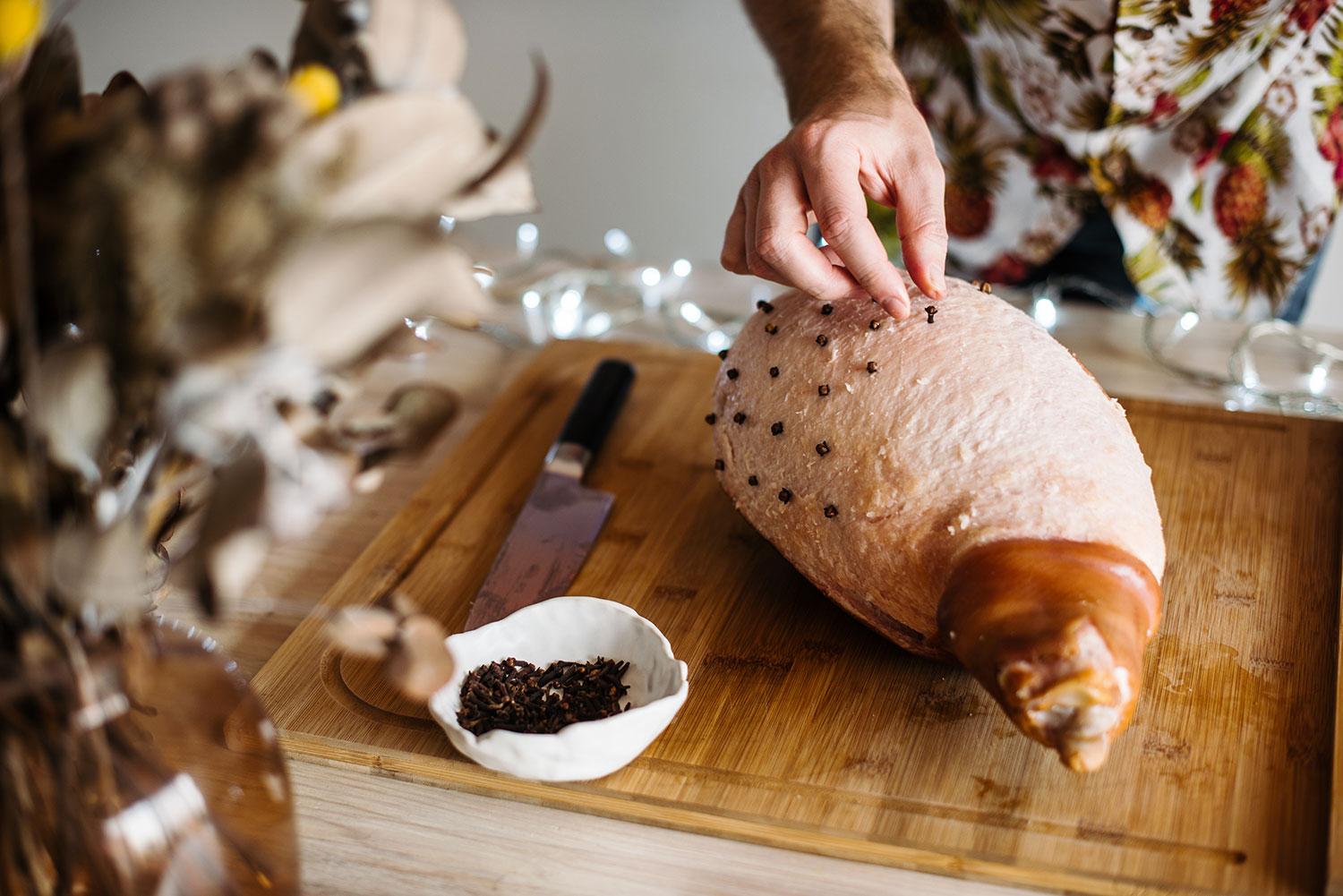
To prepare the ham, the skin is carefully removed, revealing a layer of fat. This fat is neatly scored in a criss-cross pattern (which is later distinguishable once the ham hits the heat), and cloves are studded across the leg for flavor, fragrance, and aesthetics.




There are numerous glazing options and methods for your consideration – maple, brown sugar, bourbon and pineapple, cherry, honey, and even soy. A great Australian chef I once worked for shared his simple glaze recipe with me, and my ham life began anew – lavish sweeps of orange marmalade, peel and all, followed by a dusting of mustard powder. Jammy preferences aside, there’s no real wrong answer here so long as the glaze has a sugary element to help caramelize your ham handiwork.
The Potatoes
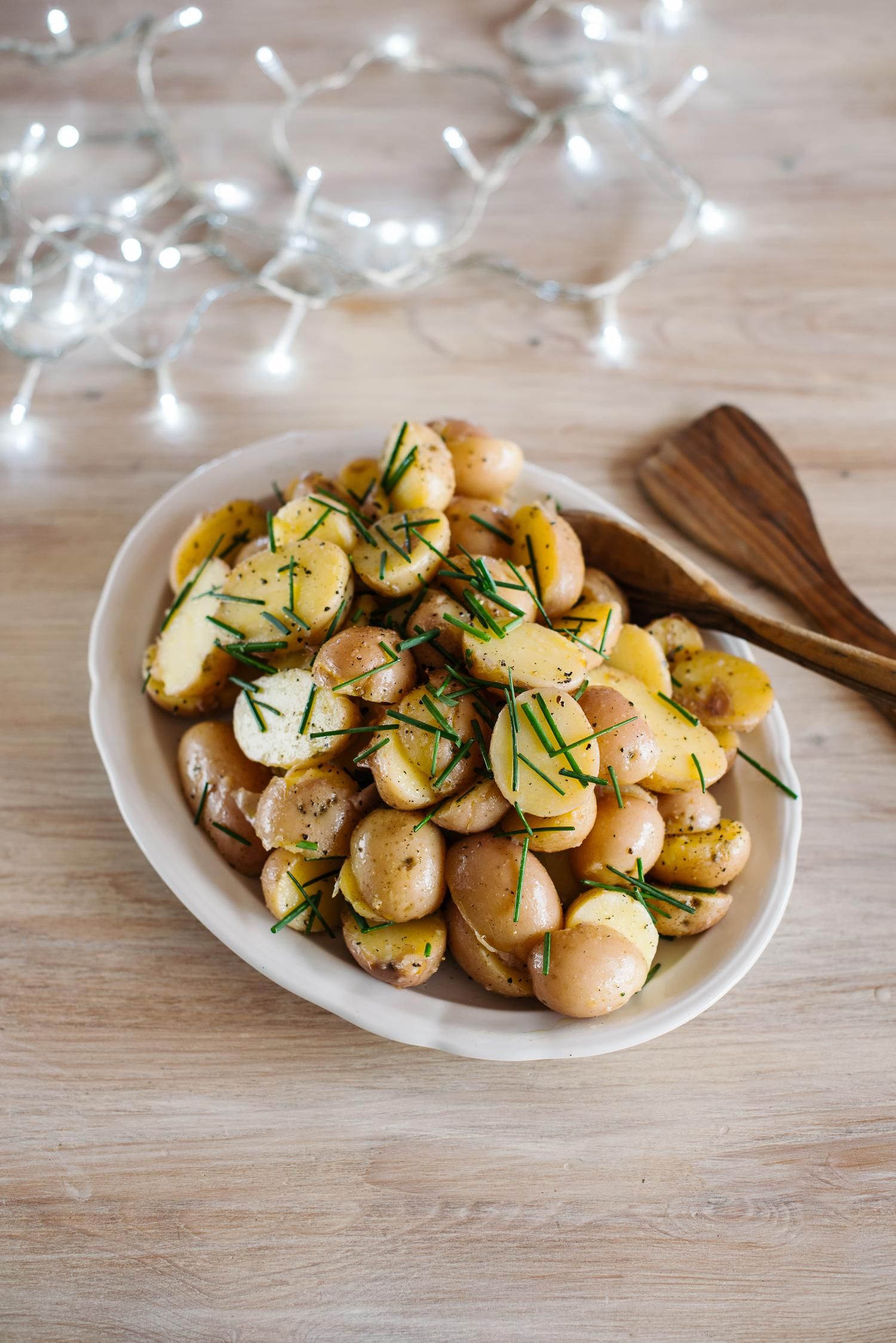
A beautiful ham requires beautiful carbs. Potato salad is a staple-status salad at Christmas time, often dressed in mayonnaise and sour cream. My dish of choice, however, is just boiled and warm potatoes in a simple vinaigrette, salt, pepper, and a fistful of powerful chives from my balcony garden.
While I don’t have a backyard of my own, my husband and I try to grow as much as possible on our balcony. I’ve found even just a few herbs are a nice way to feel a connection with what we eat when home-grown everything isn’t possible. My Cypriot grandfather has a vast backyard of greens and citrus – these are goals for one day, but for now, we can mirror his ethos in our own, tiny way.
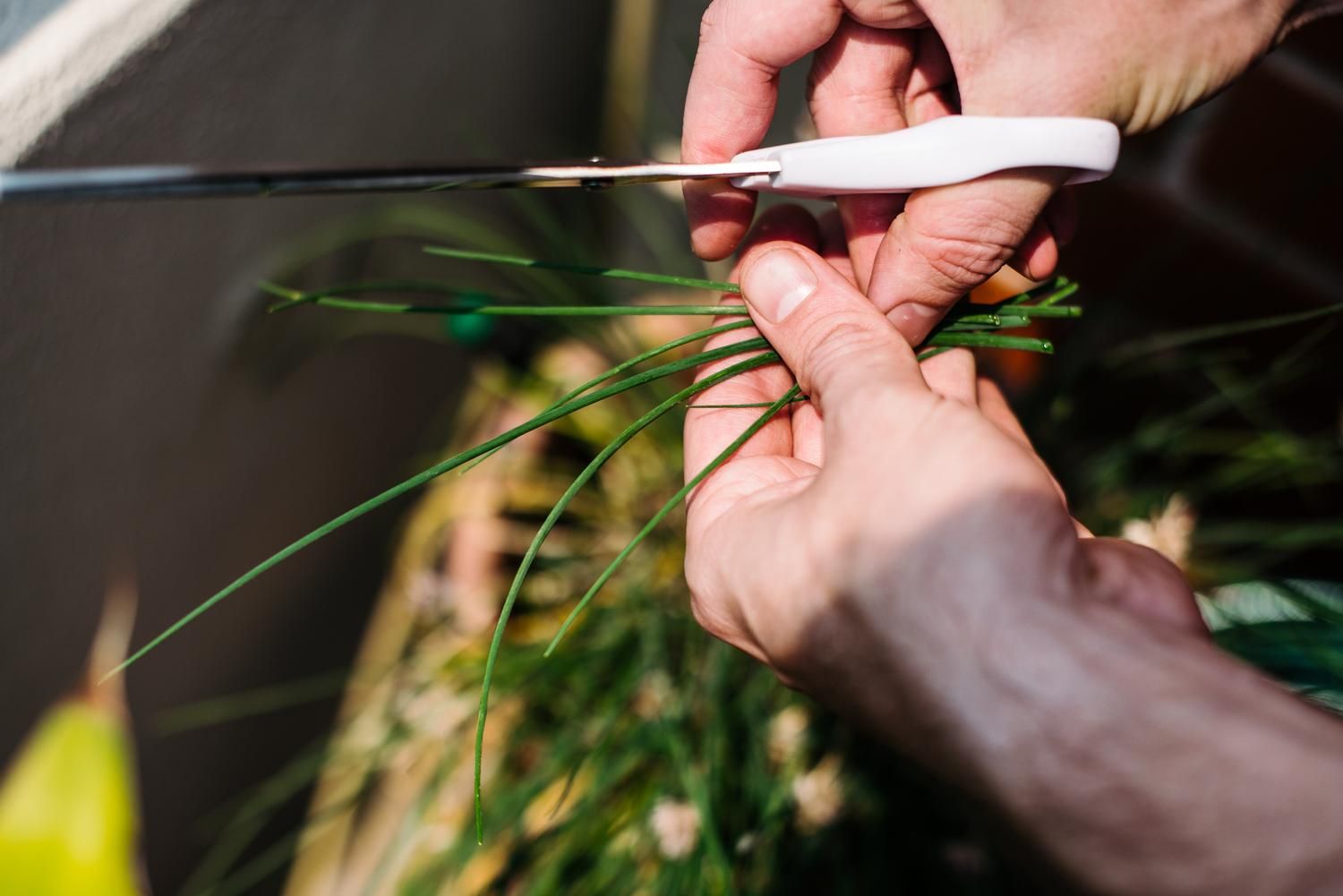
The Salad

To accompany that luscious ham on the bone, I crave and require a juicy, zesty, tangy, and crunchy plate. Pomegranate arils are dispersed amongst quartered cherry tomatoes, fresh thyme leaves dragged from their stalks (also from my balcony garden), and everything is dressed in pomegranate molasses and olive oil. As a very welcome imposition, my Mediterranean heritage mandates that pomegranate is more than a new-world garnish, but a way of life.
The Serving
Christmas ham is a summer stunner, and it’s compulsory to carve and serve everything at the table with a side of good mustard. We all have that one friend who’s great at this; in this case, it’s my friend Andrew.

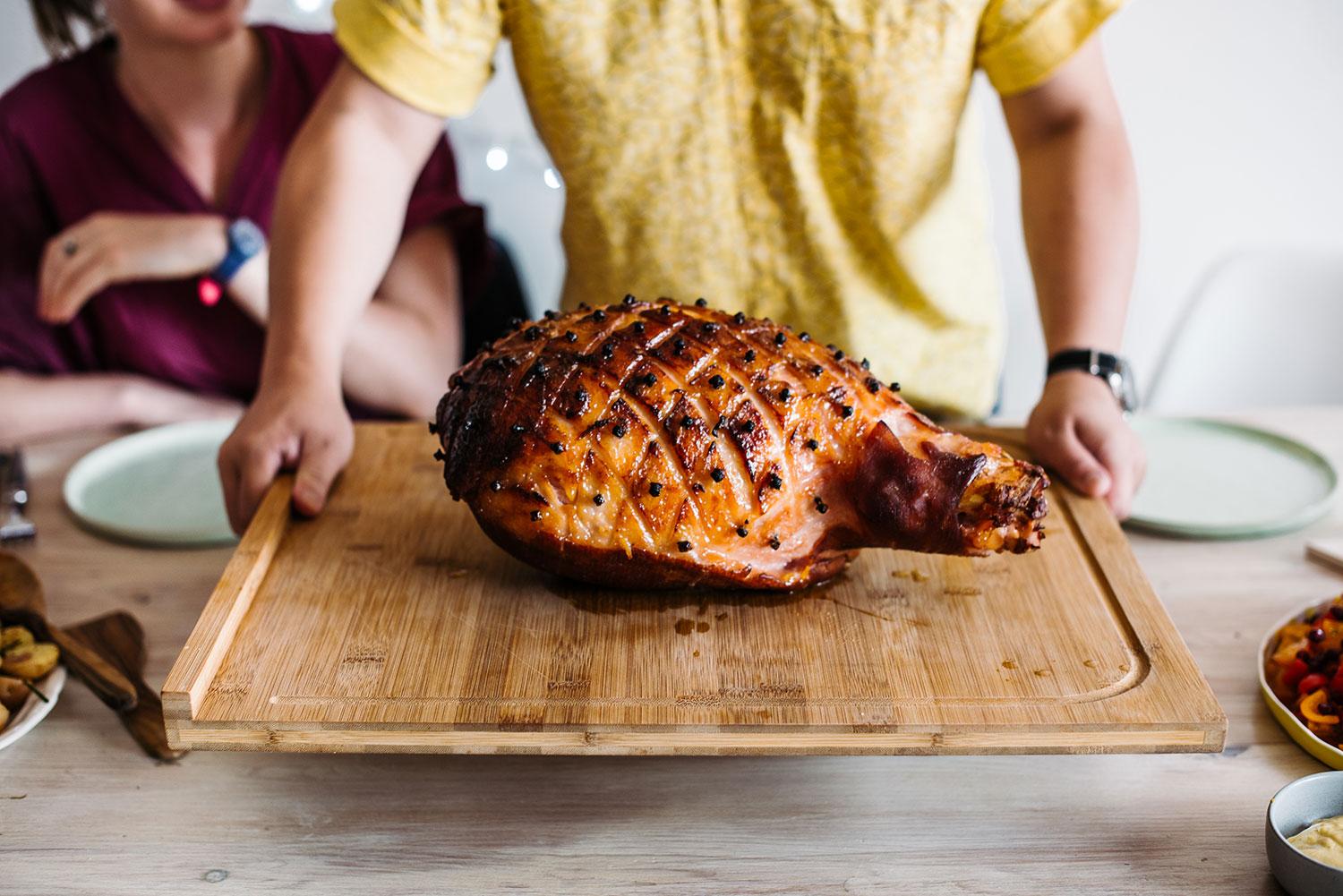
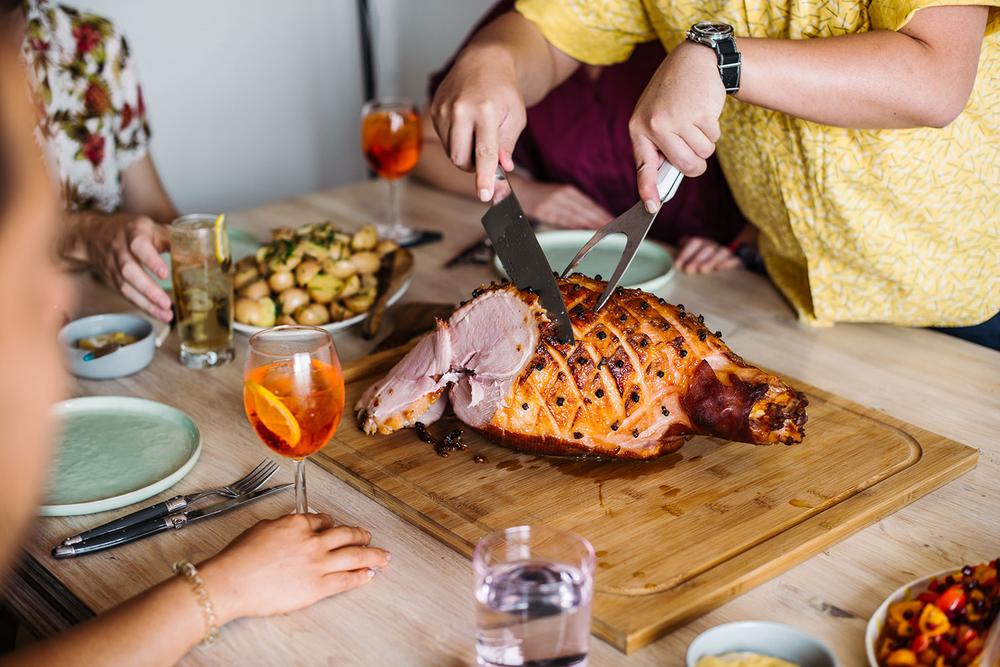
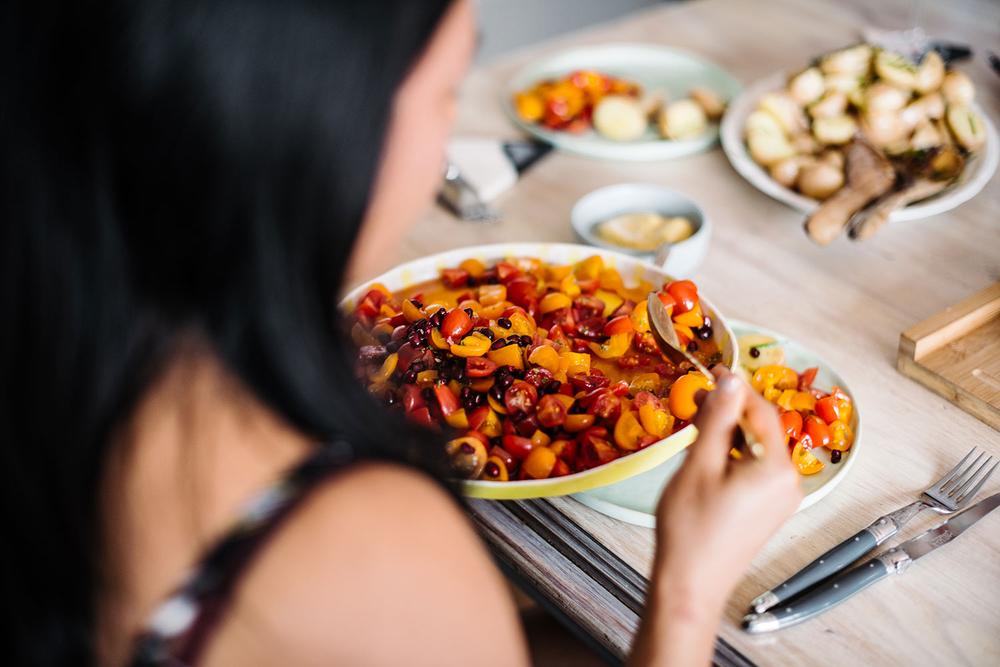
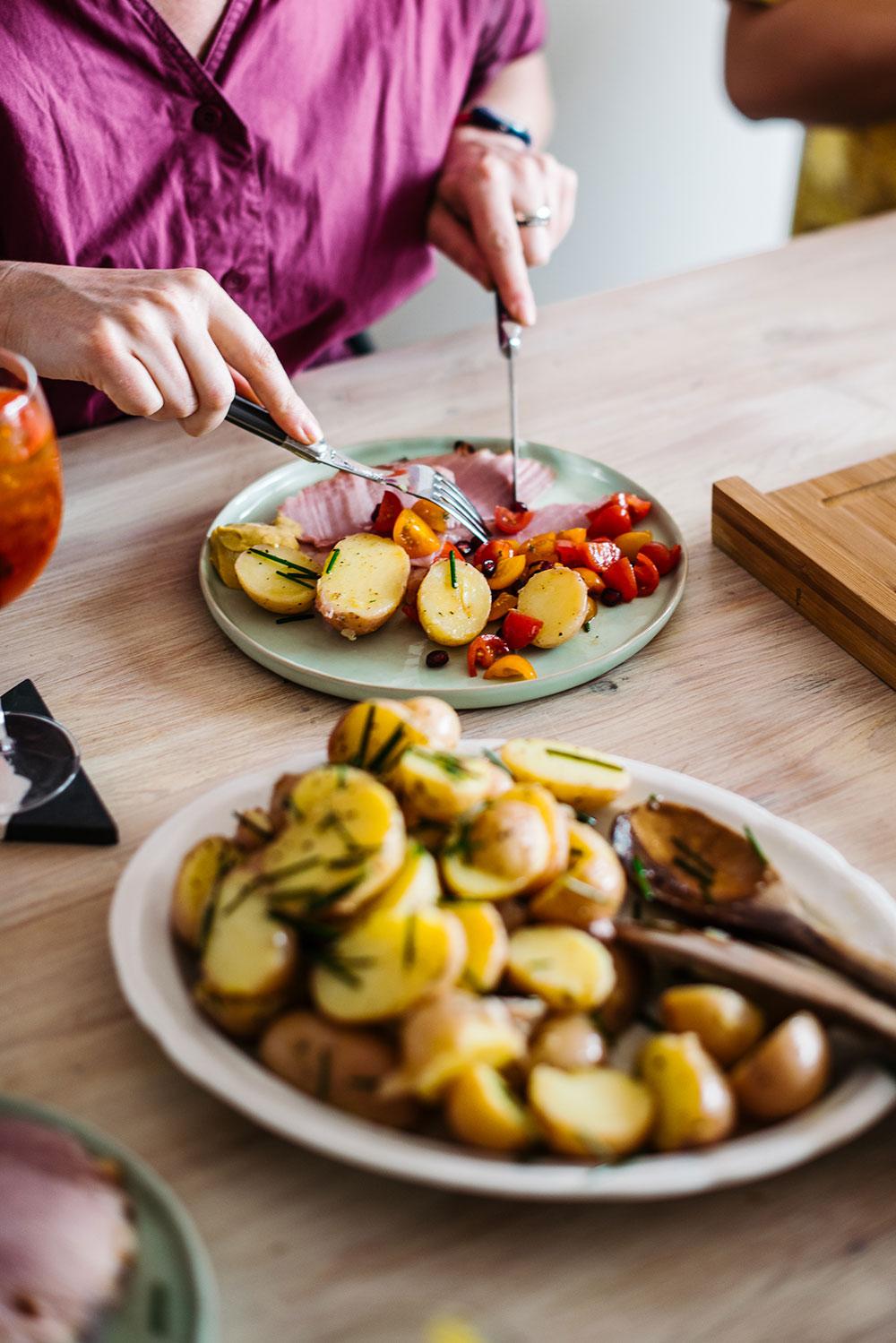
The Plate
The good trio. Plus mustard.

Dessert
There are few desserts more Australian than a pavlova, and there are few desserts that remain as charming after a heavy dumping of chopped fruit is piled on top of them. Here I’ve prepared two pavlovas, stacked and filled, to create the big, sweet fruit sandwich of my dreams.
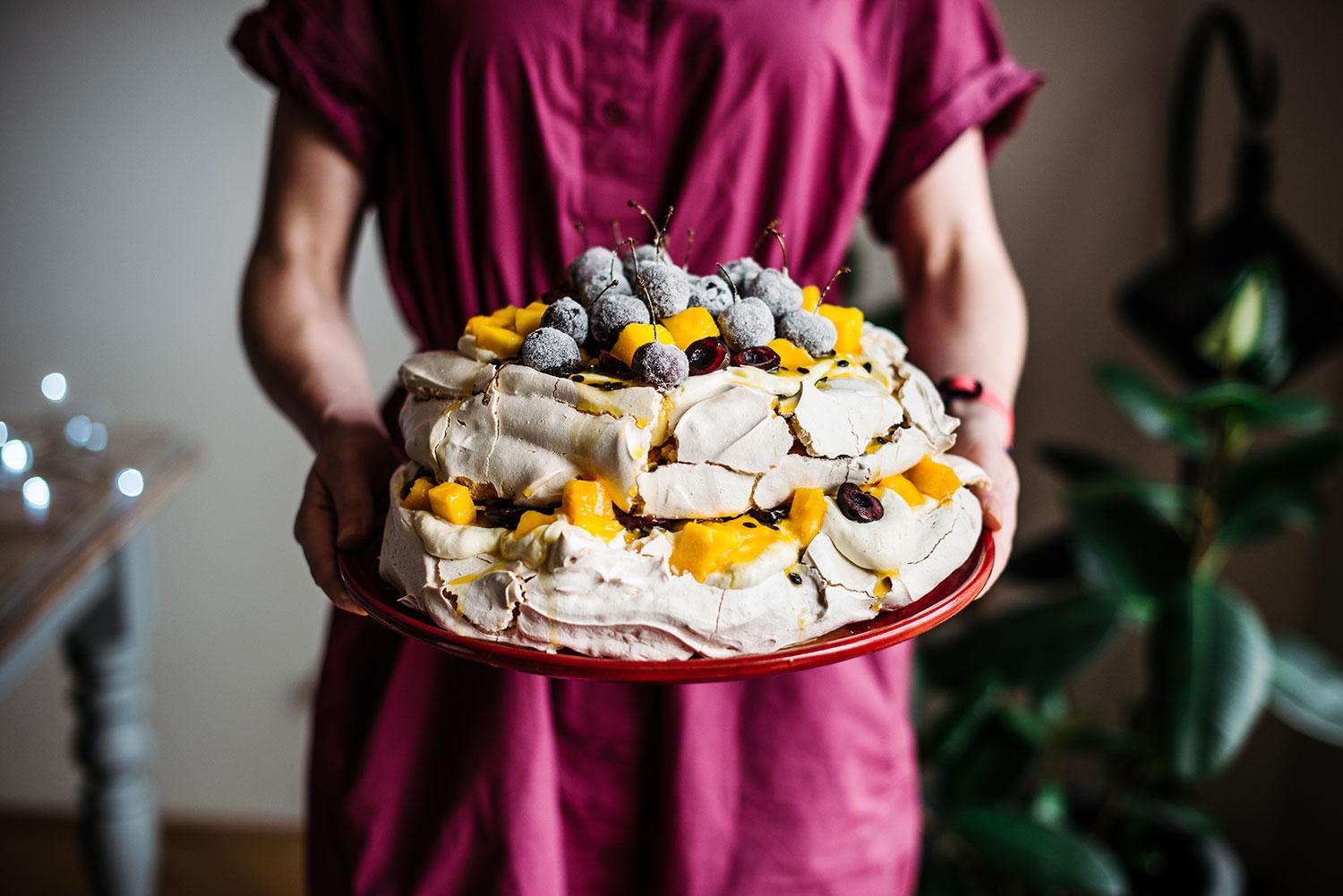
Egg whites and sugar are whipped, shaped, and baked at a low temperature to form large, meringue discs. They are pedantic and fragile but delicious when handled properly. Pavlova should be crisp on the outside with a chewy, marshmallowy center. That’s the law of the pav.

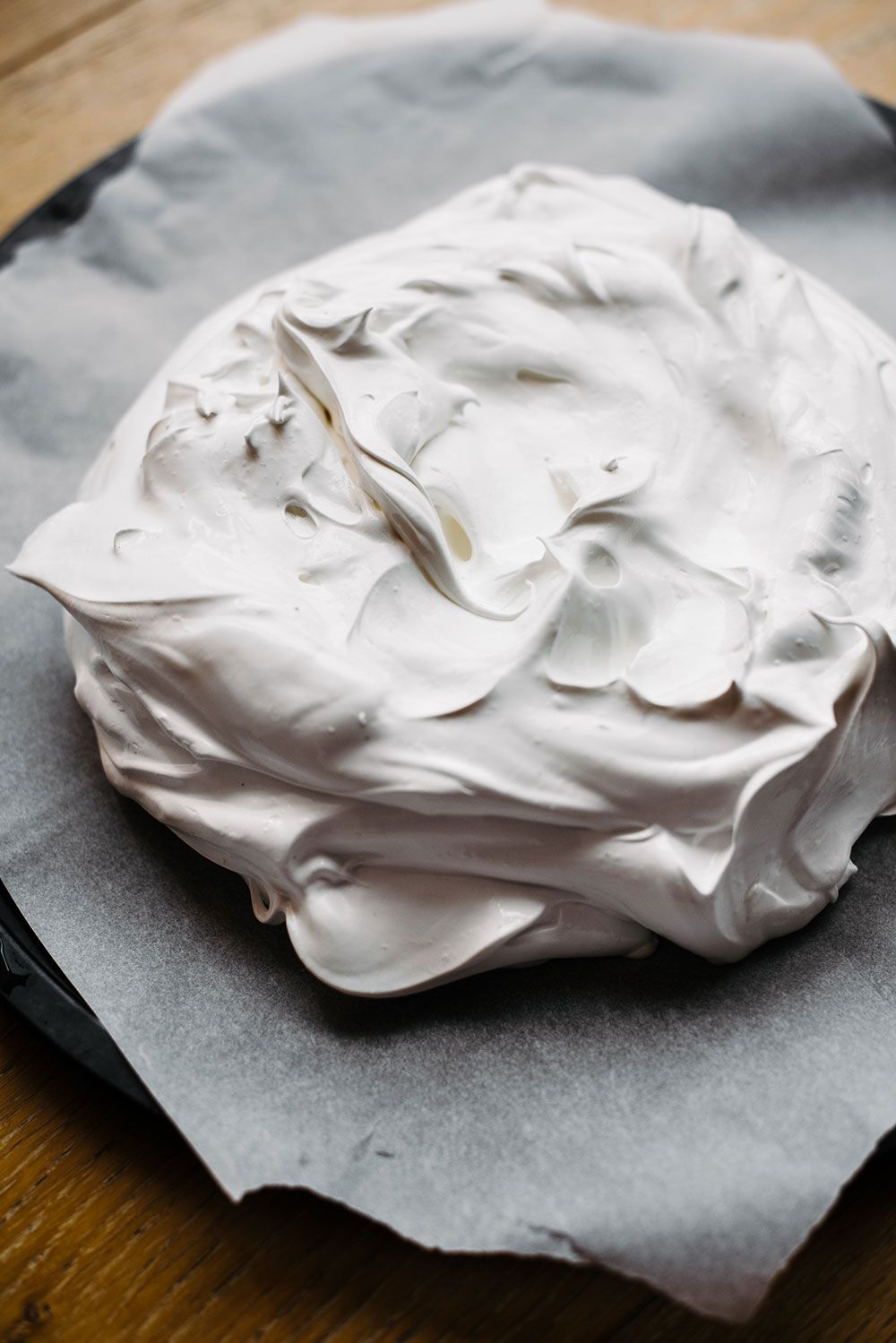
Cracks are okay! It’s going to be covered in good stuff anyway.
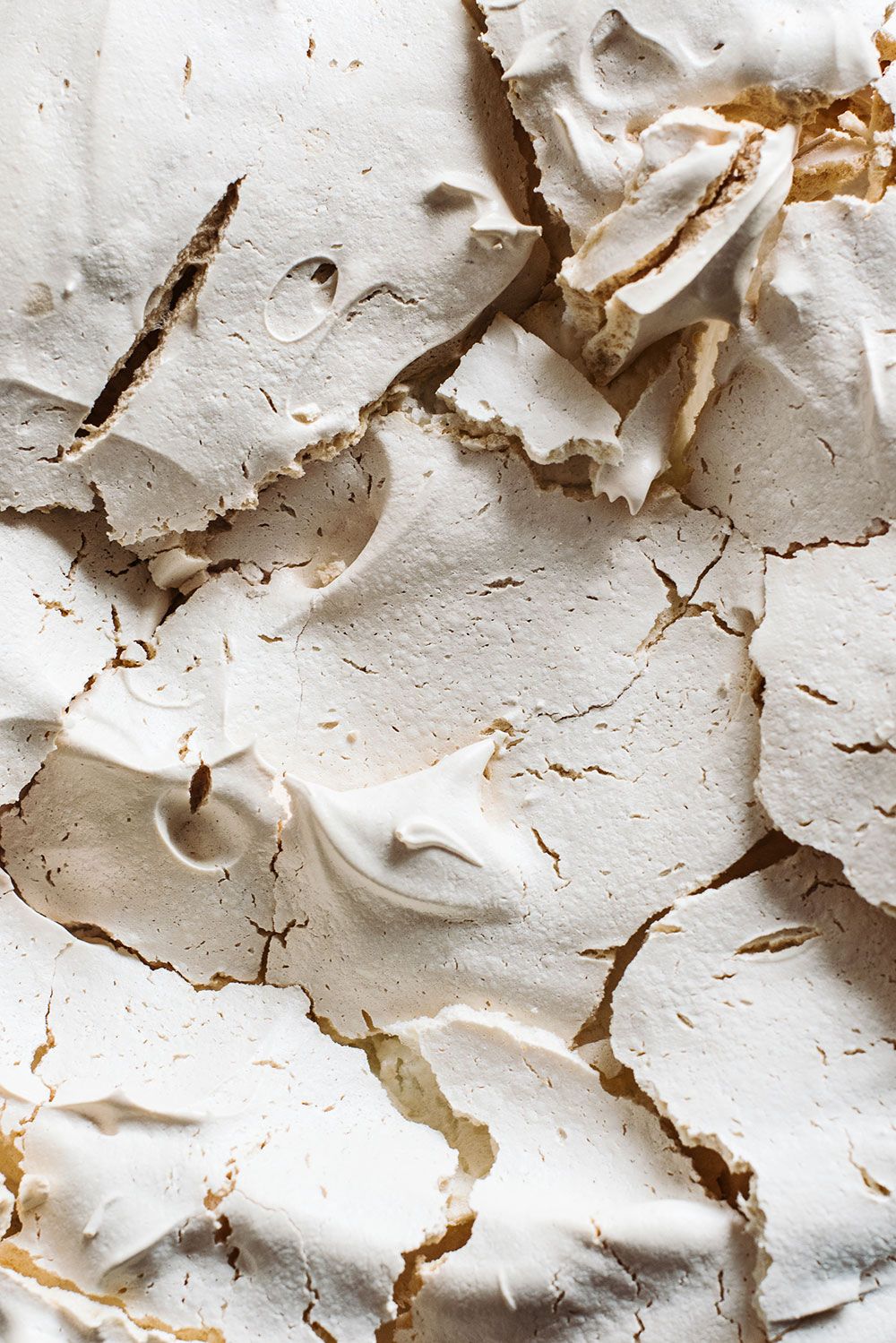
Classic pavlovas are crested with fruit and whipped cream and nothing more, and mine involves a huge tumbling of all the best summer fruits – buttery mango pieces, new cherries, and tart, syrupy passionfruit pulp. These fruits are all grown and picked in the summertime, so ’tis the season, literally.
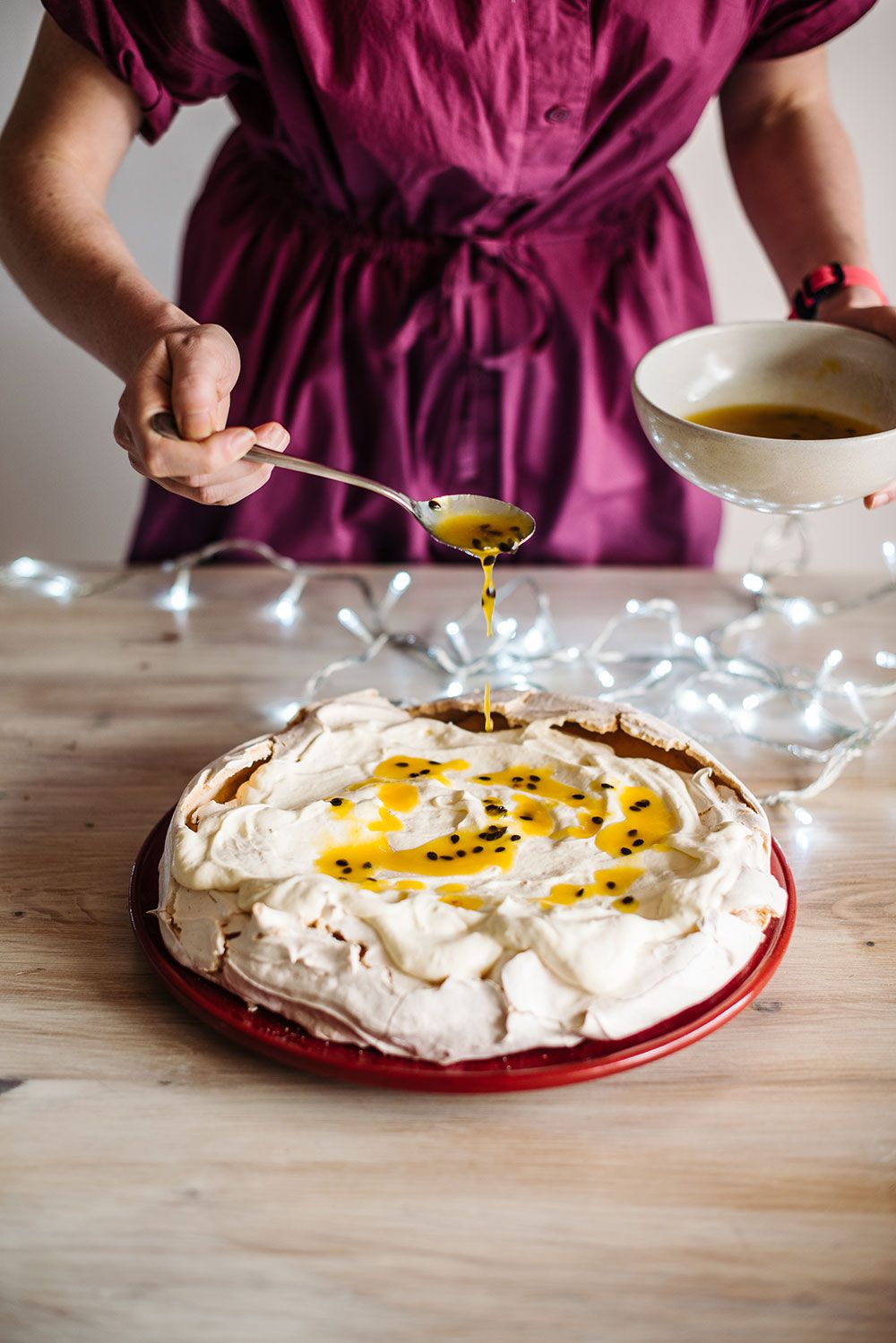
There’s no snow in Australia over Christmas, so the obligatory icing-sugar-over-dessert maneuver is wildly inappropriate here. As a more subtle, kitschy alternative, I’ve made sugared cherries by lightly brushing them with whisked egg whites, rolling them in fine sugar, and allowing them to dry and harden. The result is some frosted fun all over your cake without conceding too badly to the opposite hemisphere with opposite weather.

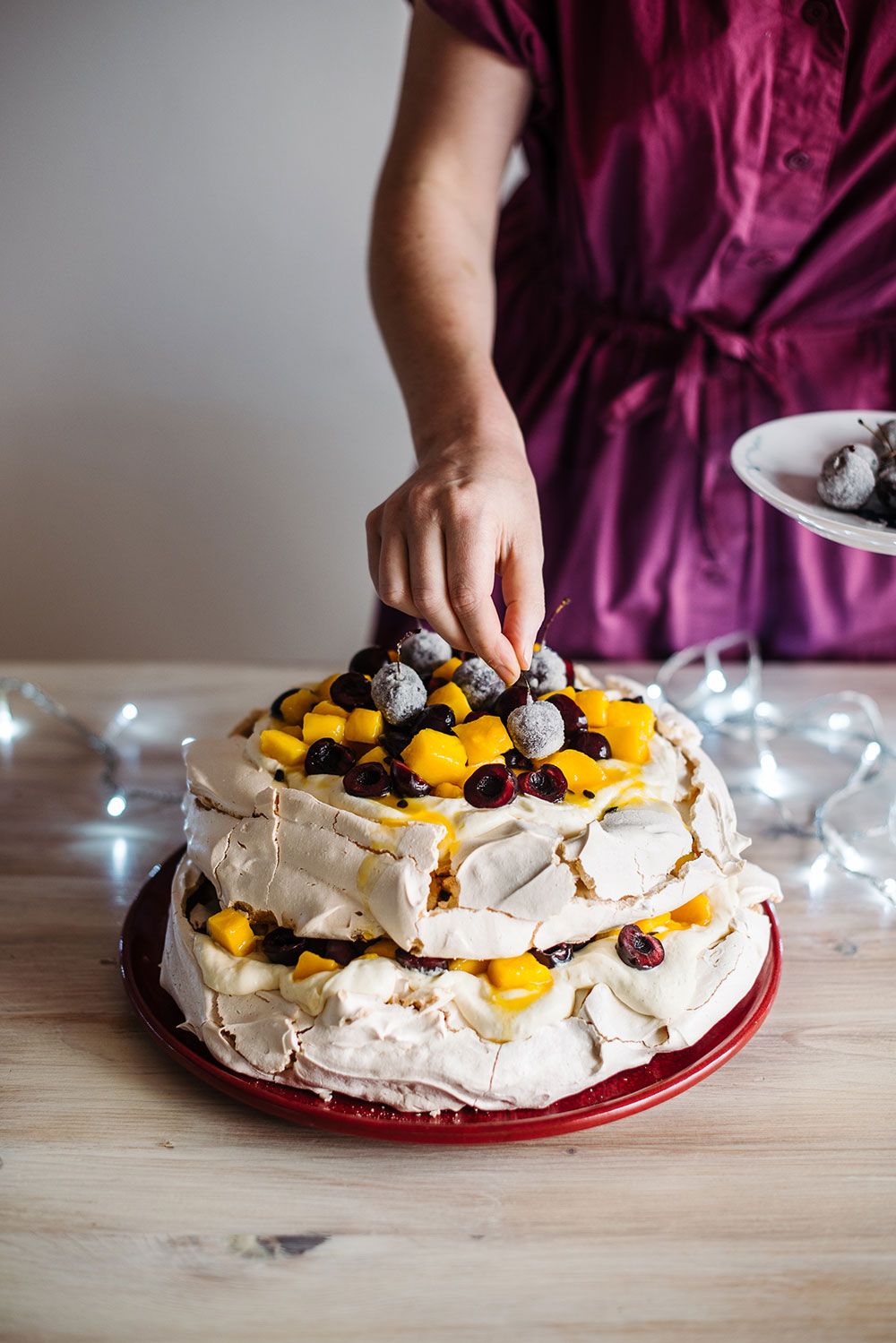
Pavlova is the kind of pretty dessert that becomes messier and messier the more you dig. It’s an Aussie inevitability. Cake servers can wait – this is a job for a big spoon. Lean in.

I thought I had chosen these fruits for my pavlova because I love mango, cherries, and passionfruit – but as I write this, I am reminded of my Cypriot grandmother serving a big plate of cherries after Sunday lunch. I can feel the heady scent of overripe mango in my late Egyptian grandfather’s home when we came to visit. I remember the family anxiety and unease of watching green mangoes dangling on the backyard mango tree on a windy day and wishing, praying, the weather will show mercy on the young fruit so it wouldn’t fall to the ground prematurely and be ravaged by bugs and birds. I can still taste that one perfect dessert my Egyptian grandmother would make, which everyone in the family clamored for, and that quickly disintegrated into a mess on a platter. I remember the alarmingly fruitful passionfruit vine my dad grew from nothing that wildly, hilariously grew out of control and engulfed our entire backyard that one summer.
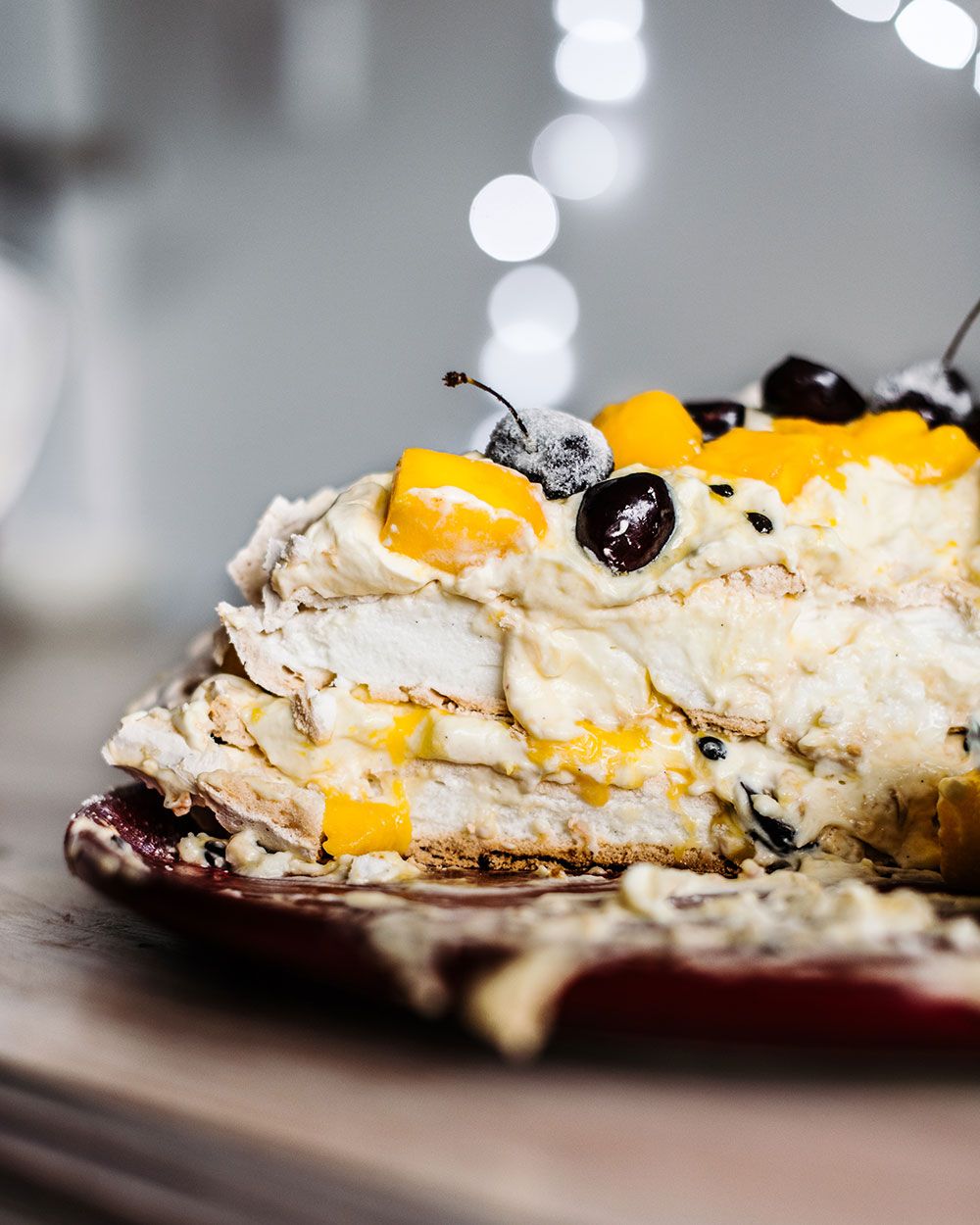
I remember my mum slicing cheeks of mango for my brother and me as kids after a summer swim, in that immaculate criss-cross pattern that she also draws across the Christmas ham for us.
I now make that ham! I cut the mangoes too! I’m grateful for my parents’ and grandparents’ cooking at Christmas time, just as I’m grateful to be subconsciously guided preparing Christmas lunch for my friends. This big ham, pomegranate in the salad, and a dessert that’s very difficult to slice are all drawn from my lived Australian experience and from those who came before me from elsewhere, and that’s heaps Aussie, aye.
If you liked this article, please consider supporting APPETITE. Your donation will go towards project costs and paying creatives. One-off donations start from $5 via Buy Me a Coffee.

